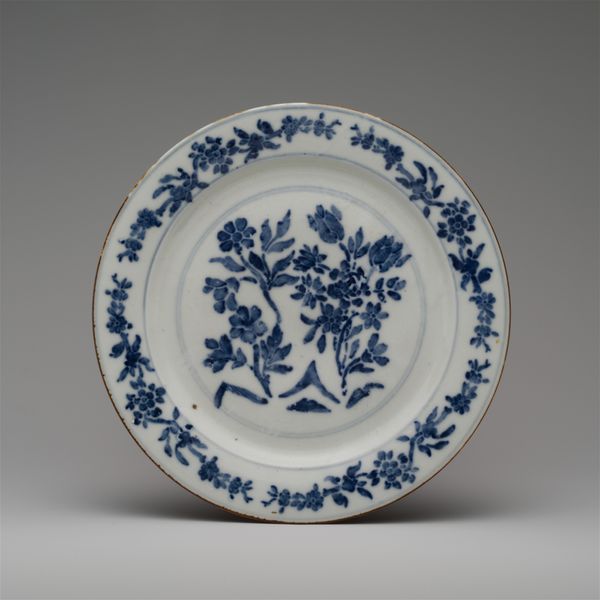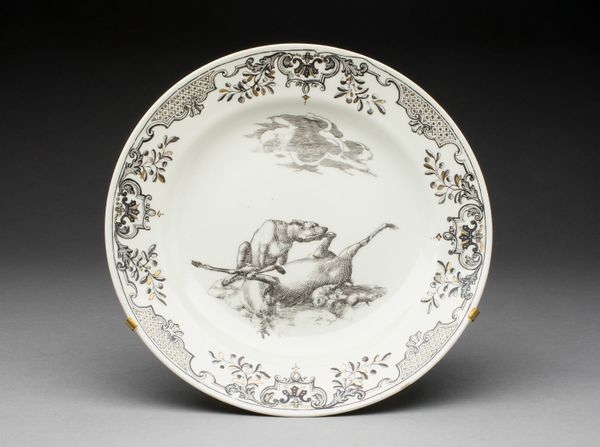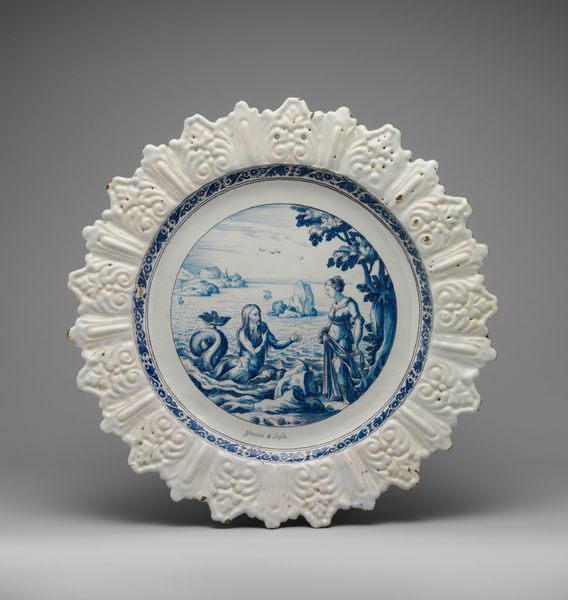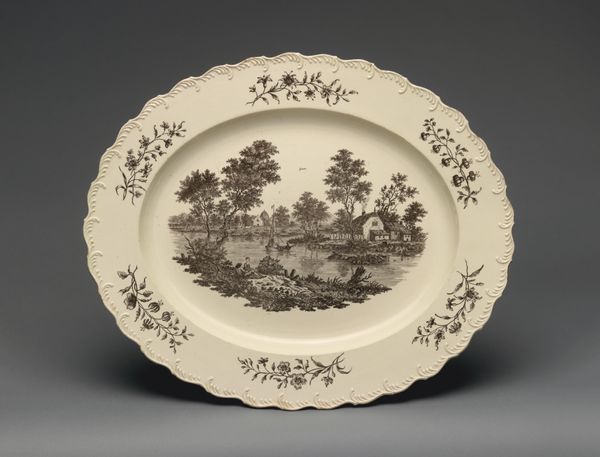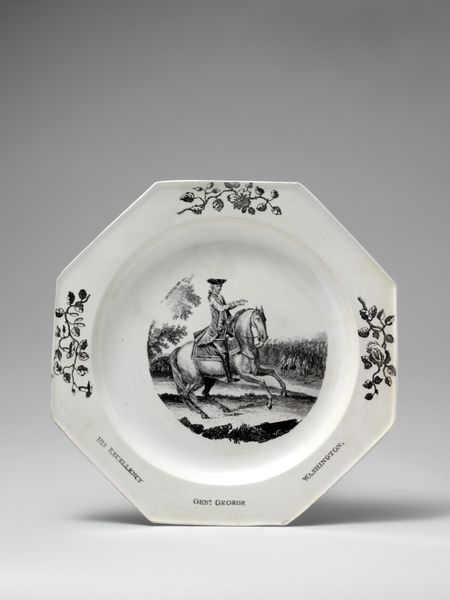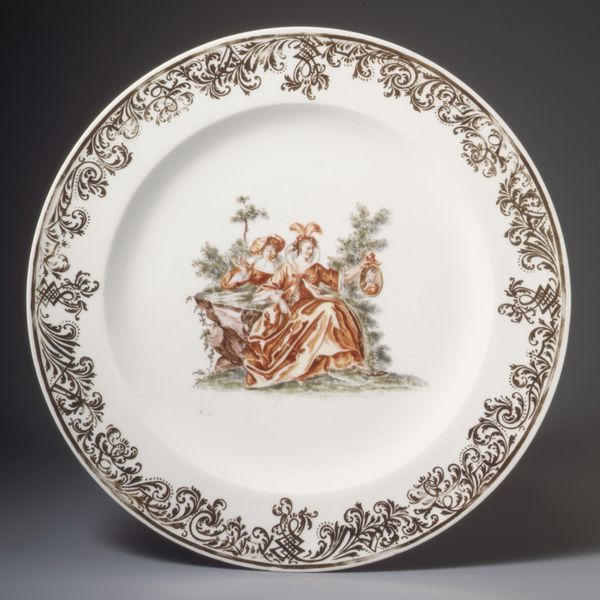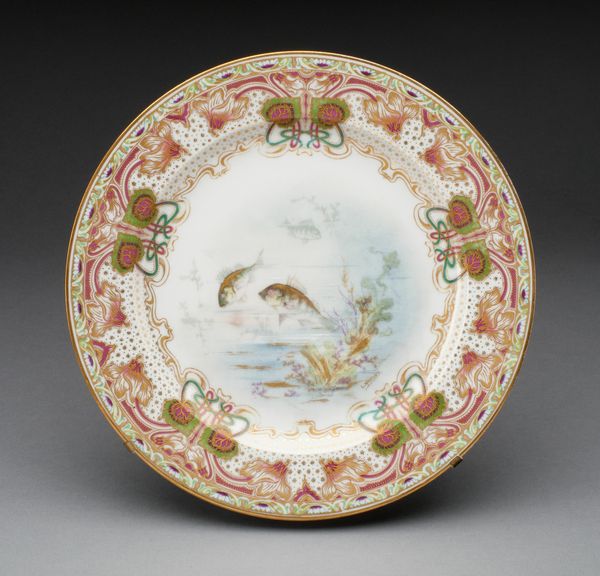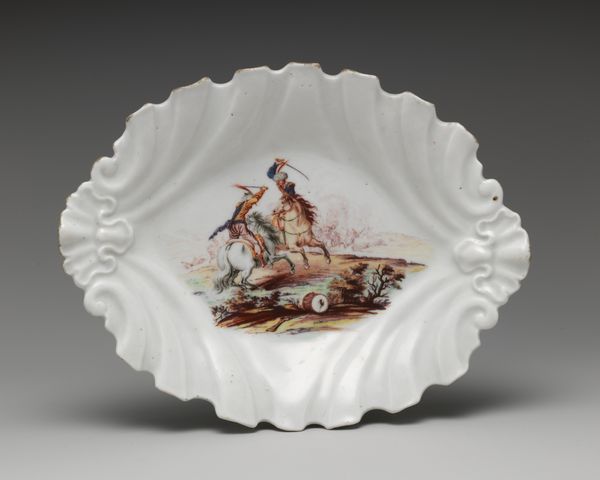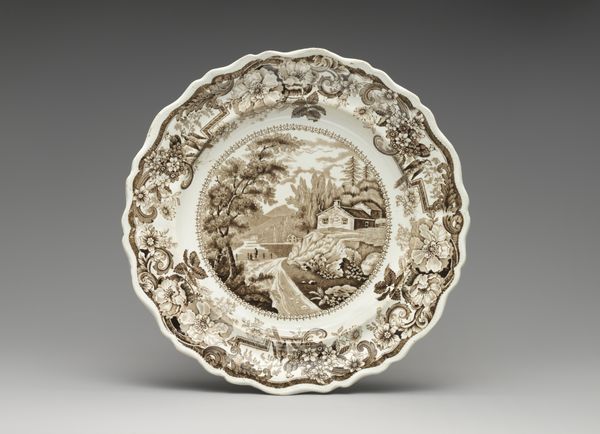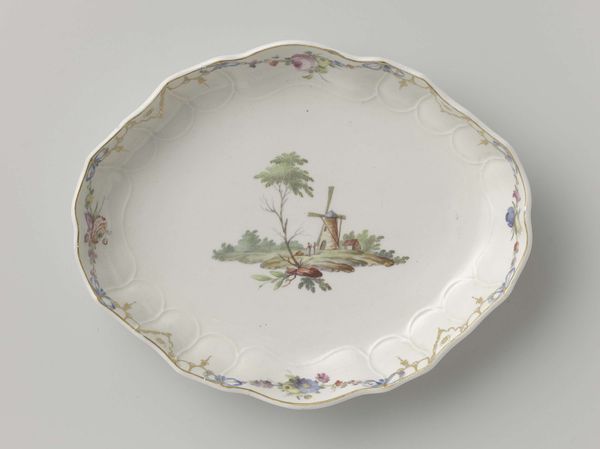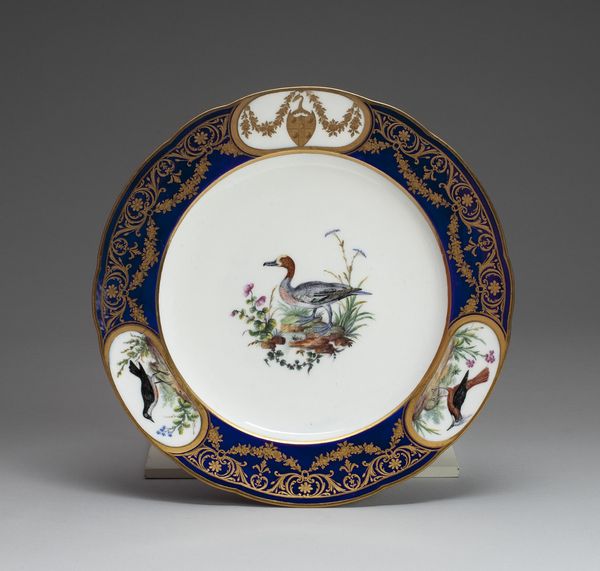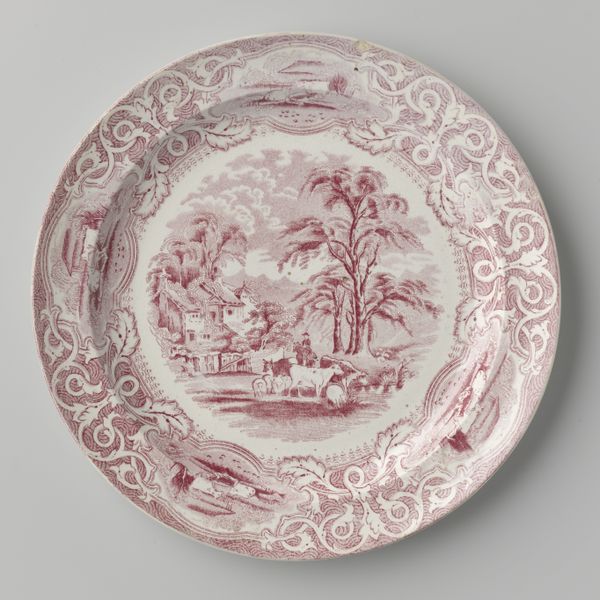
ceramic, porcelain, sculpture
#
baroque
#
animal
#
landscape
#
ceramic
#
porcelain
#
figuration
#
sculpture
#
ceramic
#
history-painting
#
decorative-art
Dimensions: Overall (confirmed): 3 x 16 1/4 in. (7.6 x 41.3 cm)
Copyright: Public Domain
Curator: Here we have a charger, a decorative plate, made in Vienna around 1730 to 1740. The material is porcelain, and it is currently located here in the Metropolitan Museum of Art. Editor: It's struck me immediately. The monochrome scheme gives it a dramatic flair, almost like a stage set for a hunting scene. I am intrigued by the contrast between the stark whiteness and the deep blacks of the decoration. Curator: Exactly. Monochrome decoration on porcelain was fashionable, driven by the fashion and also by the imperial manufactory, which held considerable power in Vienna. This particular subject of hunting scenes was intended for the courtly taste. Hunting as an activity and also as an aristocratic symbol, this type of porcelain connected the product and aristocratic taste, status, and imperial identity. Editor: I think we need to look at it also as a feat of ceramic production. Porcelain, even now, presents particular difficulties. Imagine trying to capture so much detail with such control, from mixing materials to keeping it from breaking during high-temperature firing. It suggests something significant regarding division of labor; probably several specialized artisans would need to work on one plate. Curator: Certainly, these objects acted as status symbols beyond their material value. By studying decorative programs favored by elite patrons we understand better what type of visual language shaped the taste and collecting habits of these audiences, particularly since courtly consumption of artwork served the function of legitimizing and augmenting social distinctions. Editor: It's interesting to consider the function of this object. I can not imagine eating on this; its flatness emphasizes ornamentation more than utilitarian concerns. Was it always destined for display, therefore distancing itself from labor or anything related to physical sustenance? Curator: To your point, such luxury items also encouraged related developments, such as improved display cases or dedicated shelving within private collections, affecting what it meant to consume art or host lavish feasts for diplomatic missions within this period. Editor: Considering all its complexities, its place on display today says something about evolving artistic and market contexts. It prompts thoughts on how an object once linked to the identity and power is today appreciated in another way by new viewers. Curator: It certainly encourages us to investigate not just who originally used such chargers, but how they are interpreted and valued across history, within different social structures and power dynamics.
Comments
No comments
Be the first to comment and join the conversation on the ultimate creative platform.
